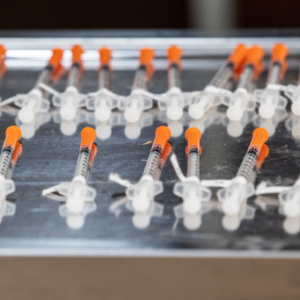CANKER
Max presented after his owner noticed the frogs of his feet had become soft and irregular. Upon examination it was clear that he was suffering from Canker in three out of four feet.
WHAT IS CANKER AND HOW DOES IT OCCUR?
Canker is an overgrowth of abnormal frog tissue, caused by bacterial infection, resulting in an over proliferation of soft, white sensitive frog and infectious material.
It is often described as being cauliflower-like with a cottage cheese discharge. It initially affects the back of the foot but can spread to affect the solar surface of the foot as well as deeper structures.
Fortunately, this condition is rare but when cases do occur it is usually in draught breeds like Max. The overgrowth of soft and sensitive material means the affected horses often become lame and treatment needs to be performed as soon as the condition is noticed for the best prognosis.
HOW IS CANKER TREATED?
Historically, corrosive agents have been applied to the lesions to burn away the abnormal tissue. However, this is unreliable and can cause a great degree of discomfort to the horse. Debridement (surgical removal) of the tissue back to normal appearing healthy frog is the best treatment method. For mild cases this can be done under standing sedation. However, in severe cases or if multiple feet are affected, debridement is performed under general anaesthetic, as in Max’s case.
Tourniquets were used on three of his legs to reduce the blood supply to the feet, thus reducing blood loss during surgery. Rosie and Stuart cut away all abnormal frog material until normal appearing healthy frog was reached, then his feet were bandaged to keep them clean.
Post surgery, Max’s feet were maintained in antibiotic dressings whilst normal frog tissue regrew and he was kept on pain relief to ensure he was comfortable throughout. After a couple of months, a few mini tidy ups of his feet under standing sedation, and tonnes of TLC he was finally given the go ahead to return to turn out and work.





